How to Get More Engagement on Social Media (Without Being Pushy)
8 out of 10 small to medium businesses use social media in order to drive the growth of their business.
However, as with all things, not all businesses using social media will have equal results.
There will be some businesses obtaining remarkable results with social media and there will be some achieving tepid results, if any.
So what separates the successful businesses from the not-so-successful?
It’s engagement.
If you can’t get people to engage with you on social media, you won’t be able to benefit from all that social media has to offer.
Need guidance on social media management? Check out this guide to learn how to get more engagement on social media.
However, when trying to improve engagement on social media, you can’t be pushy.Otherwise, your efforts will amount to nothing. You may even generate negative results.
In this article, we’re going to take a look at how you can improve engagement levels on social media, without being pushy.
We’ll analyze a variety of strategies and discuss how you can implement them.
By the end, you should know exactly how to get more engagement and grow your business using social media.
Let’s begin!
Should you post a little… or a lot?
If you know even a little bit about the world of social media, you’ll be aware of the fact that a lot of people are talking about posting frequency.
How frequently should you post, and is there such a thing as posting too frequently or even too infrequently?
Let’s first consider Facebook. Here’s the problem — the Facebook News Feed is becoming ever more competitive.
If you follow social media trends, you might have joined the mass of companies that are now posting 31% more this year, than just a year ago.
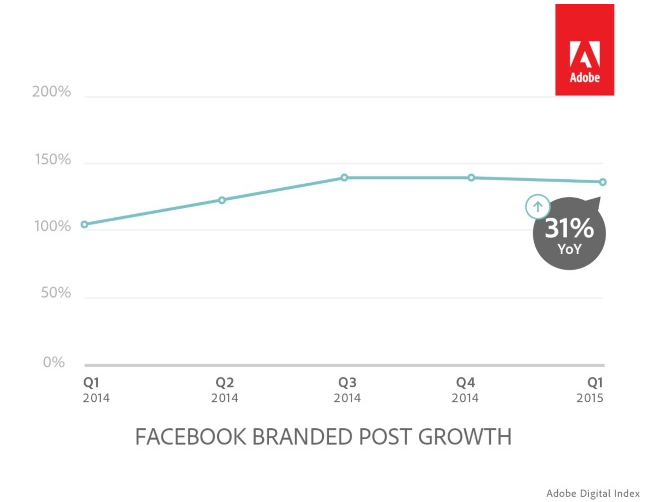
Estimates suggest that around 1,500 items per day are competing for position on a Facebook user’s News Feed.
So, will posting 6 times a day instead of 1 really help you break through the noise?
Hubspot collected Facebook data from over 13,500 customers and created the following chart.
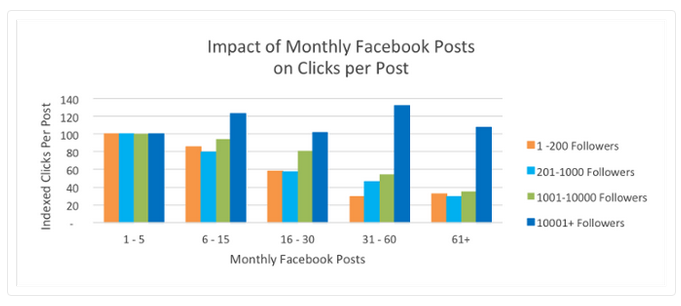
Remember, the goal is to maximize engagement. This chart codifies engagement as ‘Indexed Clicks Per Post,’ aka how many people click on each post.
You’ll notice that when posting around 1-5 times a month, clicks per post average at around 100, whether you have 1-200 followers or 10001+ followers.
But, things change as you begin to post more.
You’ll notice that the only companies that benefit from posting more are those that have 10001+ followers.
Let’s look at some of the potential reasons for this.
One reason is that these companies have a large following and frequent posting is likely to create something that each spectrum of their fanbase is going to appreciate.
Plus, their content is less likely to saturate (and even annoy) their audience as quickly, when compared to the companies that have fewer followers.
So, what really matters when it comes to generating engagement? — it can’t just be that you need more fans.
According to this chart, there can’t be an exact correlation between fans and engagement. Otherwise, the results would continue to rise even after the 61+ mark.
And, if you think about it, the gains made by big companies when posting more are disproportionate in relation to the amount of followers that they have ps vita schnelleren.
So, what really matters when it comes to boosting engagement on Facebook posts?
This is it — If you want to improve engagement on Facebook posts, it helps to craft quality posts rather than focusing on creating tons of posts and hoping for the best.
You’re competing with a huge amount content on the platform.
However, if you can create something truly awesome, it will attain a decent amount of engagement from your core followers.
If it’s very good, results will snowball and your post will appear on more News Feeds.
More exposure = a greater chance of your post receiving more engagement.
What about Twitter — does frequency of posting help there?
Engagement on Twitter can fall after posting more than three times per day.
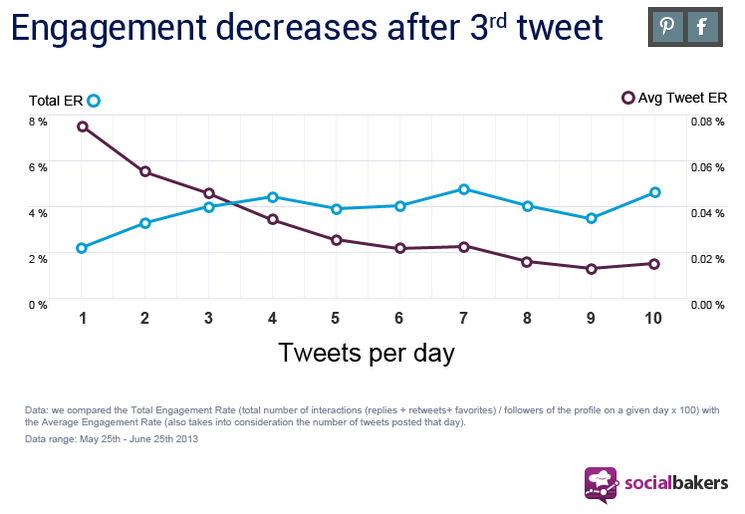
One reason why this might be the case, is that when you post so much, it’s too much content for followers to keep up with. Honestly, it can become a bit annoying, too.
This chart shows a similar pattern.

You could argue that the same rule applies to LinkedIn and Facebook as well. No matter the platform, people can still only consume a certain amount of content per day.
However, you will find that the amount of content you can publish will depend on the industry you’re in.
In any case, if you want to play it safe, you might want to stick to what has been mentioned.
After all, as shown below, even those on the receiving end don’t want to see a lot of content posted in one day.

Understand what kind of content resonates with your audience
We touched on the importance of posting interesting content earlier.
Though a lot of content is being posted every day on social media platforms, there’s always a demand for quality content.
Therefore, if you can post quality pieces of content, you’ll be able to improve engagement levels.
So what counts a valuable, quality content?
Important note: Whether content is deemed valuable or not is determined by the type of followers and fans you have on your social media platform.
And here’s the kicker — you can have different kinds of fans/followers on different social media platforms and so you need to account for this.
Let’s delve deeper into this topic.
Have a look at some of the posts from the Asos Facebook page.


They’re pretty laid back and humorous. They also don’t have a lot to do with clothes — which is what Asos sells.
Yet, they still have a lot of engagement.
How is this so?
It’s because these posts are suited to their audience and the platform in question.
If you take a look at their fan page, you’ll notice that from time to time, they do throw in a post that is related to clothes — but it’s not often.
Fans don’t like a lot of self promotion and Asos knows this.
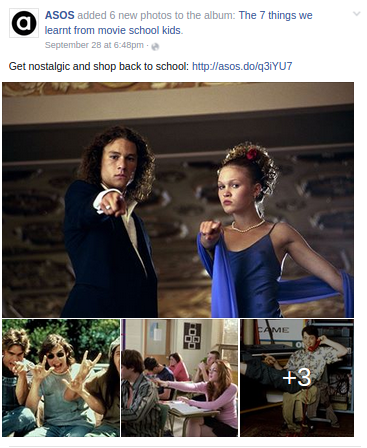
When it comes to posting humorous posts, you’ll notice that their Twitter page follows a similar theme.
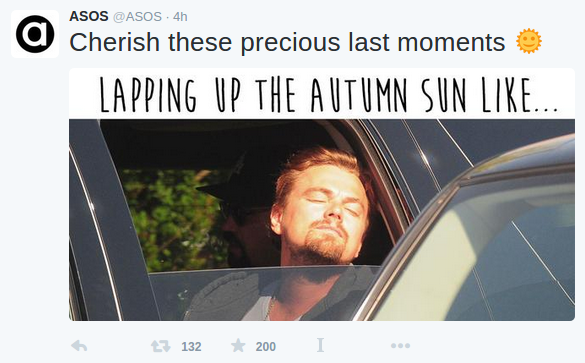
Okay, so this is the approach they take on their Facebook and Twitter page — but what’s their LinkedIn page like?
Here’s a post from their company page on LinkedIn.

And another one nintendo ds roms kostenlosen.

After looking at this you’d start to question if these social media profiles belong to the same company!
Yes, they do.
And still, their posts are successful, receiving a lot of engagement.
Why?
Because the audience on LinkedIn has different interests when compared to the audiences that can be found on Facebook and Twitter.
Asos recognizes this and adapts their strategy as a result.
Their talkative style might transfer across platforms, but that’s it.
Your content needs to account for the interests and personality of your audience as well as the social media platform that you’re publishing on.
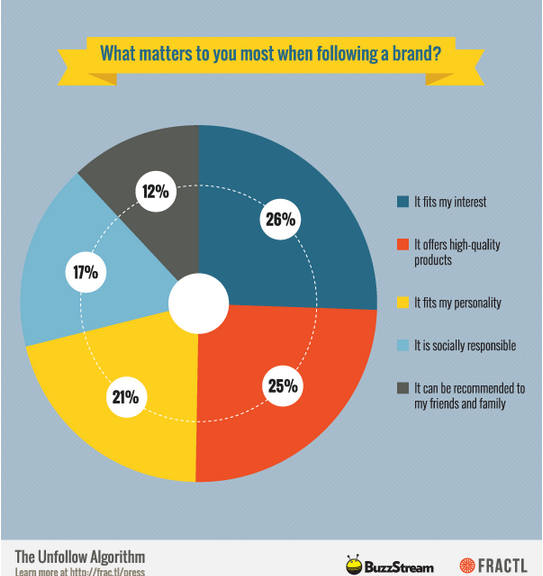
People like content that fits their personality and their interests.
Combined, you’ll notice that 46% of people consider those needs above all else when following a brand.
A lot of companies can get away with the style used by Asos on their Twitter and Facebook pages. That’s because it’s the principle that matters most.
You see, the posts made by Asos are heavily influenced by their target market. They post things that their target market can identify with.
Whatever it is that’s being posted, their audience can relate to it.
If you’ve got something silly, entertaining or inspirational, you can still post it for a B2B brand — as long as it is relatable to your audience.
You’ll see this a lot when businesses are posting inspirational quotes. Starting and running your own business is hard. Inspirational quotes acknowledge this.
Whenever an inspirational post is put up on a company’s Facebook or Twitter page, it tends to do quite well.
That’s because the audience identifies with what is being posted.
Here’s an example from Hewlett Packard.

You wouldn’t expect a motivational post from Hewlett Packard, but there it is. It also didn’t do too badly at generating engagement.
For the sake of contrast, here are some of the other things that they post on Twitter.

Notice how they injected a little bit of humor into their tweet too?
Let’s take a look at what’s being posted on their LinkedIn page.

As a side note, notice how they used the image to pique curiosity so that you click through.
Here’s another example of a LinkedIn post from HP.
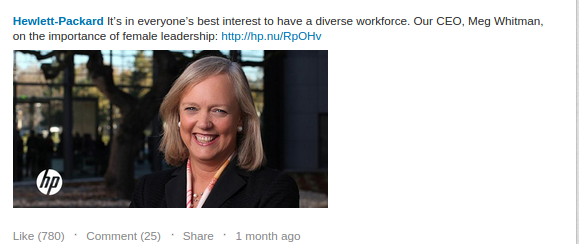
They stick to some of the same principles that Asos follows, posting content that their target market enjoys and can relate to.
And, as with Asos, they adapted their strategy depending on the social media platform in question.
In general, you’ll find that social content on Facebook and Twitter is somewhat humorous and entertaining.
LinkedIn, however, is often a little bit more socially conscious and serious.
Of course, you’re free to test otherwise.
Remember — post content your audience relates to and adapt your strategy to the social media platform you’re using.
Now that you understand that, let’s look at some examples of valuable and entertaining content!
Industry news is one example of content that is valuable.

If you can keep people up to date with what’s going on in your niche/industry and you can do it consistently, people will regularly check out your social media profiles.
Just posting content is not enough, however. You need to get people to engage with it.
You can get people to engage with your content by asking them a question related to what has been posted (more on that later).
People like to read about what other people think in relation to a topic that’s being covered in the news — often in the form of comments.
If you can create an environment where people comment on news items on your social media page, you’ll create consistent visitors to your social media page virenscanner kostenlos herunterladen.
Would you rather go to a news website that provides industry news in isolation or a social media page that posts the news and regularly generates a discussion in the comment section?
Comments are a form of engagement. If more and more people interact with your content, it may take on a life of its own.
Eventually, it will appear in more News Feeds as a result of the increase in engagement, thereby boosting exposure.
If you’d like to find out what’s going on in your industry, consider using the Google Alerts service.

Simply pick a few choice topics/keywords related to your industry, and, every day, you will have a selection of things to post on your page.
Valuable content can also come in the form of things that you have produced yourself. If your company has a blog, then why not repost your content on social media?
Just go through your back catalog and then post links to the pieces of content that you think will be considered valuable.
You can do this by taking a look at the most popular posts on your blog. You can also use a tool like Google Analytics to do this.
Additionally, you could experiment with repurposing certain pieces of content. For example, you could turn a blog post into a infographic or you could turn it into a piece of audio.
This is a great strategy for reviving old, but evergreen, pieces of content.
As before, take a look at your most popular pieces of content first. Get a sense of what might resonate the best.
However, you want to be careful.
People don’t like a lot of self-promotion. In fact, it’s why 45% of people unfollow brands.
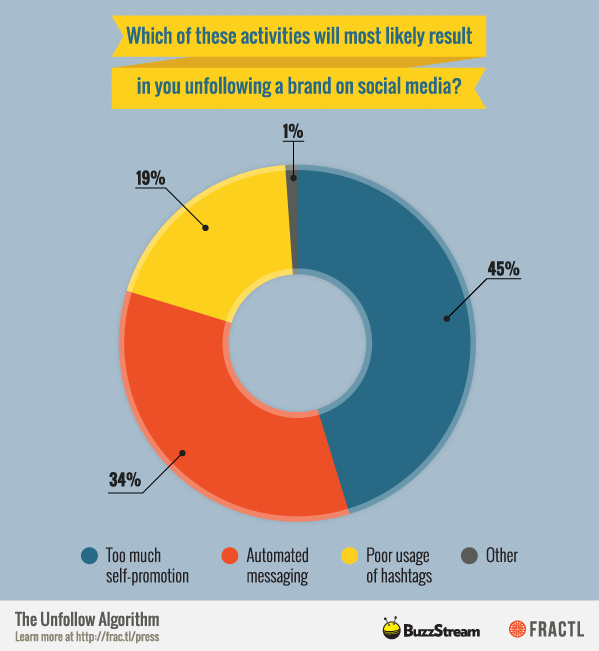
Because of this, you might also want to share content from other people. This is a great way to keep your fans/followers engaged, while avoiding the ‘too much self-promotion’ trap.
If you want to find some relevant content for your niche/industry that isn’t yours, go to Buzzsumo.com.

Become a member and enter a keyword that is based on something that people want to learn more about.
Let’s say that we want to find out more about ‘Facebook marketing.’

After searching that keyword, we see the page above.
Already we can see 3 potential posts that might be worth sharing.
When looking for great content to share, we can ‘Filter by Date,’ in order to find recent pieces of content that are relevant.
We can also pick by ‘Content Type,’ if we’re looking for inforgraphics, for example.
There are more advanced search options within the platform, though these basic options should unearth some decent content to begin with.
While you’re posting content from Buzzsumo, you can use your research findings to work on some of your own content.
Social media platforms tend to be very visual platforms. You’ll want to create an image to go along with any social media post.
After all, tweets with images generate 150% more retweets than those that don’t contain images.
Below is an example of a Twitter profile that used an image to highlight a blog post that was being shared on the platform.
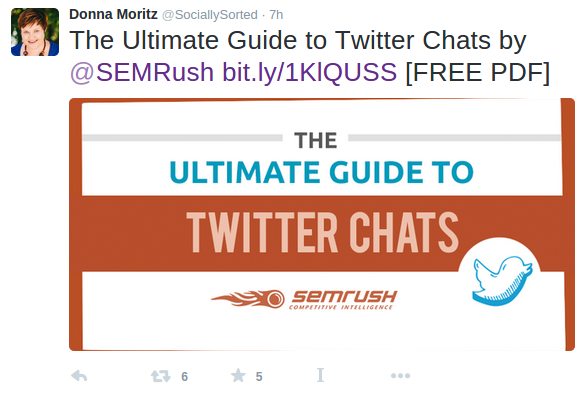
Facebook engagement can also be improved by using images herunterladen. 87% of interactions that happen on Facebook Pages are on ‘photo posts.’
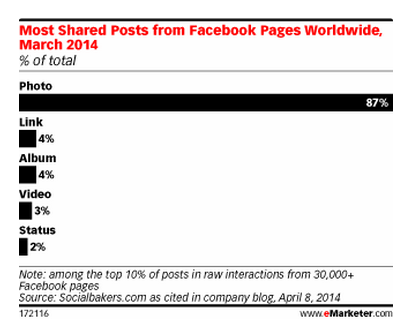
Here’s an example of how you can use photos on the Facebook platform.
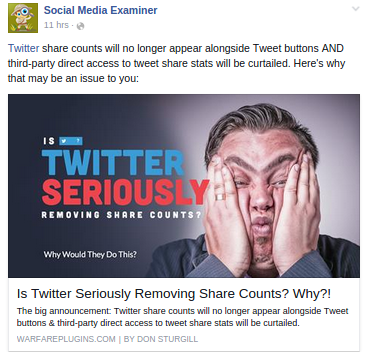
The kinds of images you are going to create will depend on the style of the post and what platform you’re using.
Either way, creating images is not difficult.
If you want to create images for your posts, you can use something known as Canva.
To do that, go to Canva.com and sign up.

Then, pick the social media category.

Next, pick a template that you like and populate it with a relevant content.

If you want to download the image, it will cost you a $1.00.
That isn’t much, especially considering how much it can impact engagement levels on your social media profiles.
It is a good idea to create an image every time you create a new post on your social media profile.
Using the Canva platform, you’ll be able to include a visual element for every post that you publish.
Another way you can create valuable content is by leveraging current events. Oreo did this during the 2013 Super Bowl, when there was a major power failure.
Their technique worked so well that they managed to generate over 10,000 retweets in one hour.

They’re still doing this. You’ll notice that on their Facebook Page, they’re talking about the recent lunar eclipse.

If you can do this on your own page, you’ll be able to garner some engagement using topics that are top-of-mind.
It doesn’t have to be a major event. Sometimes, you can make a post just because it’s Friday!
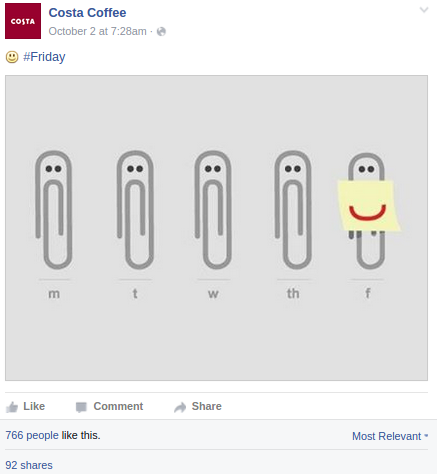
Picking the right time to post content
Now, you know how much you should post and what to post.
But, when do you post it?
As with post frequency, there’s a lot of opinions flying around.
What you’ll find is that as with the post content, it also depends a lot on who you’re posting for and where you’re posting it.
On twitter, B2B companies tend to experience a 14% engagement uplift when they post on weekdays and B2C companies experience a 17% engagement uplift on Wednesday’s and weekends.
Retweets are at their peak at around 5PM.
If you’re looking to maximize click-through-rates, post your content at 12PM and 6PM.
According to Twitter ,a lot of their mobile users are using the service while they’re commuting. It’s in this spare time that people engage the content on Twitter.
On Facebook, if you want the most shares, it helps to post around 1PM. If you want the most clicks, post at 3PM.
The best days to post are Thursday and Friday.
On LinkedIn, business hours are reportedly the best time to post your content. If you’re looking to get the most clicks and shares, try posting content between 10am-11am on Tuesdays.
In general the best days to post on LinkedIn are Tuesday, Wednesday and Thursday.
Remember it’s a B2B audience, so you’re dealing with people who use LinkedIn a lot while they’re working.
However, what if all of that means nothing fortnite herunterladen pc geht nicht? What if you stick to these schedules, but don’t experience great results? What then?
A lot of this data is based on averages from a broad range of industries.
However, as we’ve discussed several times, each industry is different
Even each city can be different. Take a look at the charts below —

Because of this, you might need to use another method to help you figure out the best times for your specific circumstances.
One such method includes using something known as Page Insights.
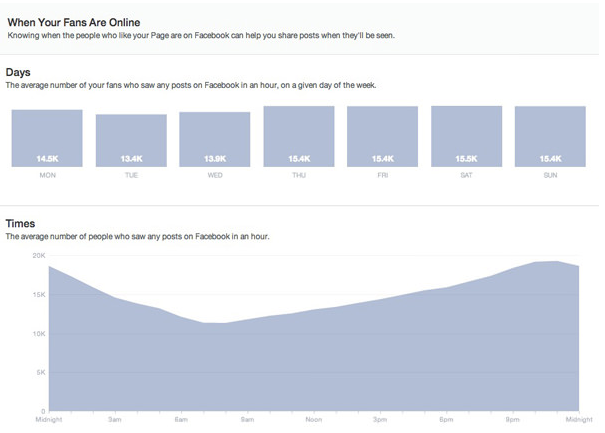
Using Page Insights, you can collect data based on who’s interacting with your page and how many people are doing so.
Once you have this data, you’ll then know what time you should be posting content, in order to maximize engagement. You’ll also be able to work out which pieces of content work best.
Of course, you’ll only be privy to this information if you’re willing to test and experiment throughout the week. You’ll want to constantly acquire new sets of data.
Pay attention to what you say and how much you say
Whatever you’re doing to market or even just communicate on the internet, copy is going to play a massive role.
Before we go too far, we need to cover the use of calls-to-action (CTA’s).
Tactics to generate engagement mean nothing if you don’t follow the rules, so it’s important to mention this point.
You probably know that calls to action are important, but you need to be careful about how you’re using them.
That’s because Facebook has recently started to penalize posts that directly ask for ‘Likes’ & ‘Shares.’
In general, Facebook no longer appreciates promotional posts in the way it perhaps once did. In the eyes of Facebook, promotional posts reduce the quality of the user experience.
Here’s what they consider to be a promotional post.

Here’s an example of a post that Facebook considers to be too promotional.

This is relevant, because if you put too many calls-to-action in your Facebook posts, your posts won’t get the distribution that they deserve.
Less distribution means they won’t get the levels of engagement that you’re after.
You therefore need to be a little bit more subtle when it comes to implementing a call-to-action in your Facebook posts.
Check out this example from the Oreo Facebook page.
See how they tell you to take an action, but they don’t go over the top.?
They also avoid using words that Facebook doesn’t like. Such words include ‘Share’ or ‘Like.’

Sure, you’ll still see some posts on Facebook that don’t follow these rules.
But, as Facebook has suggested, there’s a good chance that their reach is inhibited as a result of not following the rules.
Not all social media platforms are as strict as Facebook.
Twitter, for example, doesn’t mind as much if you ask for people to retweet your content — essentially the equivalent of asking people to share your content on Facebook.
In fact, asking people to retweet your content on Twitter has the power to massively improve your engagement levels.
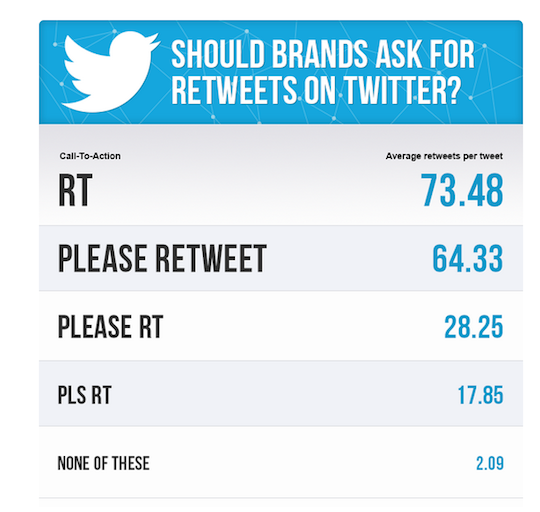
Not every method of asking for a retweet is equal. You can see that the phrase ‘RT’ generates on average 73.48 retweets.
That’s much better than asking people to ‘PLS RT.’
Here’s an example of how you can use a call-to-action on a LinkedIn company page.

LinkedIn is like Twitter, in the sense that it’s a bit more forgiving when it comes to posting promotional content that includes a call-to-action internet explorer 11 kostenlos herunterladen für windows 8.
Calls-to-action are important if you want to generate engagement on social media.
However, make sure that you understand the rules of the game before you use them.
We’ve covered CTAs. Let’s get started writing the actual copy. You’ll be happy to know that there is some crossover from other forms of marketing when it comes to creating enticing copy for your social media campaigns.
If you know how to write good headlines, you’ll be a step ahead when it comes to writing Tweets.
Let’s take a look at how much you should actually be writing. As you might have guessed, the amount you need to write is going to depend on the platform you’re writing for.
There’s evidence to suggest that tweets under 100 characters get a 17% higher engagement rate.
Tweet length can also impact the amount of retweets you get.

Facebook posts get 86% more engagement when they’re composed of 40 characters.
LinkedIn posts vary in terms of who you’re targeting.
Those aimed at B2B audiences do well when they’re around 16-25 words. Those aimed at B2C audiences should be around 21-25 words.
However, character quantity means nothing if you can’t get your point across clearly.That’s why copy matters.
You need to know how to wordsmith your posts so that they engage people and pique their interest.
The kind of copy you use is going to depend on what you’re posting about.
Though Twitter doesn’t give you a lot of room, there are still several approaches/formulas that you can use when writing a tweet.
It all tends to depend on your goal.
In general, because you’re restricted, being concise is key.
Take a look at the example below.

This tweet is brilliant because it’s concise. It might have a lot of characters, but you can’t deny that it encourages you take action.
The example below is also very concise. It does a better job at using less characters.

A great tactic for Facebook Posts is to say something vague in the text section of your post and then use an accompanying image to explain the text.
Because you want to keep the quantity of text low, this a great way to stop your Facebook Posts from being overwhelming.
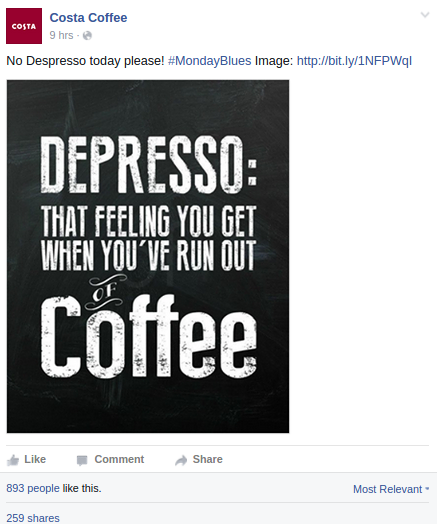
Good formatting can also go a long way when writing a Facebook Post.
As with writing on a blog, you’ll want to avoid big chunks of text and make it easy to skim.
You may, at times, find yourself struggling to come up with ideas in terms of how you should be styling your social media posts.
Because of this, it may be a good idea for you to keep something known as a swipe file.
Essentially all you have to do is create a Notebook in Evernote, a folder on your computer or some other holding space, and then save screenshots of great social media copy whenever you see it.
That way, if you’re ever struggling when writing social media copy, you’ll have something to refer to and emulate.
Take the first step and engage with people
All of the tactics we’ve mentioned are great at helping to foster some engagement tekken kostenlosen.
However, they’re not exactly proactive in terms of directly provoking engagement on your social media platforms.
Because of this, you need to know how to actively interact with people on your social media pages if you want to maximize engagement.
The simplest way you can do this is by asking people a question. When you ask a question on your social media page, you’re prompting people to respond.
Question posts have the ability to generate more engagement on your Facebook Pages.

As you can see, likes and shares tend to be higher for ‘Non-Question’ posts. However, when it comes to generating comments, ‘Question posts’ do better.
Not every question is equal, however. Some words work better than others when it comes to constructing your questions.
This is why it helps to keep a record of any post you see that is receiving a lot of engagement. It’ll allow for you to spot creative word usage.

The data shown above is composed using findings from Facebook interactions. That doesn’t mean that there won’t be any transfer when it comes to other social media platforms.
You should always be willing to test and see what work best.
The data shown might provide you with a good guideline in terms of what works best, but testing will let you know what actually works for your own audience.
There are a few ways you can ask questions. One way is to direct a question directly to your audience. You might be able to improve engagement by combining an image with the question.
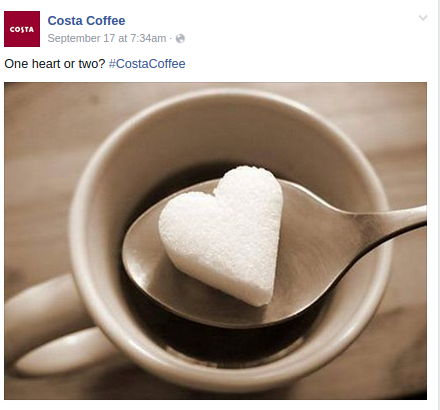
Another way might be to ask a question that then leads to a blog post or a piece of content.
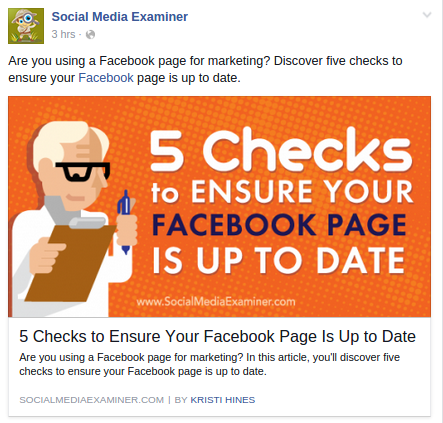
You can also prompt engagement by hosting a contest. Contests can be incredibly powerful if you use them the right way.
However, there are some rules when it comes to running a Facebook contest.
Yes, I know — Facebook and their rules!
Facebook tends to refer to contests as promotions.

Here’s what you can and can’t do when running a Facebook contest/promotion —

Keep in mind that the rules are always changing, You need to watch what Facebook is asking for on regular basis.
If you’re looking for a reason to run a contest, schedule one around a public holiday or popular date, such as Thanksgiving or Valentine’s Day.
Don’t overthink it. You could just run one because it’s the weekend!
Let’s look at some examples of Facebook contests.
The image below makes good use of a hashtag in order to draw attention.
You could argue, however, that the formatting of the text could be improved, so that it’s easier to interpret.

The next example is very clear ,in terms of what the terms and conditions are.
Note: It is advisable that your competitions have a set of terms and conditions/rules to avoid any form of confusion or future trouble videos von moodle herunterladen.
You can link to your terms and conditions in the same way that this Facebook post did.
This post also mentions a closing date and time. Doing so creates a sense of urgency, which helps to promote action.

The next contest uses an image very effectively to let fans know that there is a competition. The added text on the photo to include the words ‘win’ contributes to its effectiveness.
This competition is not being held directly on Facebook, though it still helps to generate some engagement on the platform.

Let’s take a look at how you could run some competitions on Twitter. On Twitter, you have a little bit more freedom, though there are still some rules that you need to pay attention to.
You also have less room to say what you need to, so you need to be clear and concise — nothing new here!
Thankfully, as discussed before, you can use images to expand on your tweets.
One way you can run a contest on Twitter is by asking people to retweet something.
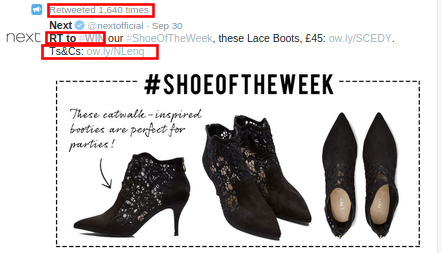
The example above showcases how that can be done. As you can see, they managed to garner a decent amount of retweets.
They’ve also managed to include a link to their terms and conditions.
The image does a great job at letting Twitter users know what is up for grabs if they enter the competition.
You can also run competitions on LinkedIn. Remember, you need to adapt your social media efforts to the platform you’re using.

For instance, Emirates airline recently ran a competition that garnered a fair bit of engagement. You could argue that their contest did well because LinkedIn is a site where professionals hangout.
Professionals often need to fly in order to meet clients, and this prize can help them to achieve just that, but at a much lower cost.
That’s why it’s relevant.
Another way that you can directly boost engagement is by hosting a Q&A session.This will work better for some brands than it will for others i.e. personality brands.
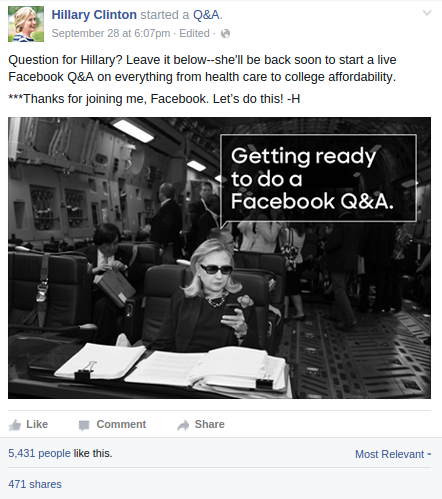
However, that doesn’t mean that you can’t be creative in your approach.
Hosting a Q&A session is a great way to get people to post comments on your Facebook page.
You can ask for people to post their questions in the comments box and then you can reply to them directly in the comments area.
You can do something similar on Twitter, where you use a hashtag to signify the Q&A session and you can respond to those asking questions directly on twitter.
You could alternatively try hosting something like a Google Hangout. This might be a bit more time intensive and it might not garner as much direct engagement on the actual social platform you’re trying to boost — but it can still help.
If you want to improve the turnout of your Q&A session, you might choose to offer a prize to one of the people who comment and ask you a question.
If you’re looking to keep things simple, you can randomly host a Q&A session. This can create a frenzy, as people clamor to take advantage of the situation john wick 1 herunterladen.
You can do that by giving people very short notice or by letting them know that a Q&A session is going to happen, without providing them with a set time/date.
A little like this…

This method can also encourage people to check in on your social media page on a regular basis, to see if a new Q&A is taking place, as they might have missed the last Q&A session.
You could also ask for people to comment and leave their questions for you. Then, you could answer the questions using a video.
This boosts engagement on your social media profile, while also providing a piece of content that could be perceived as high value.
There’s also the option of repurposing a Q&A session after it has taken place. You could, for instance, turn it into a video if you didn’t record it that way.
Or, you could take some quotes from the Q&A session and create images using those quotes.
You could even compile the tweets into a blogpost, like Virgin did.

In general, however, you need to always interact with people when they’re interacting with you. This is true even when there isn’t a major event going on.
If they post on your social media page, you should be quick to respond.
People expect companies to respond quickly after they’ve posted a comment on their social media page.
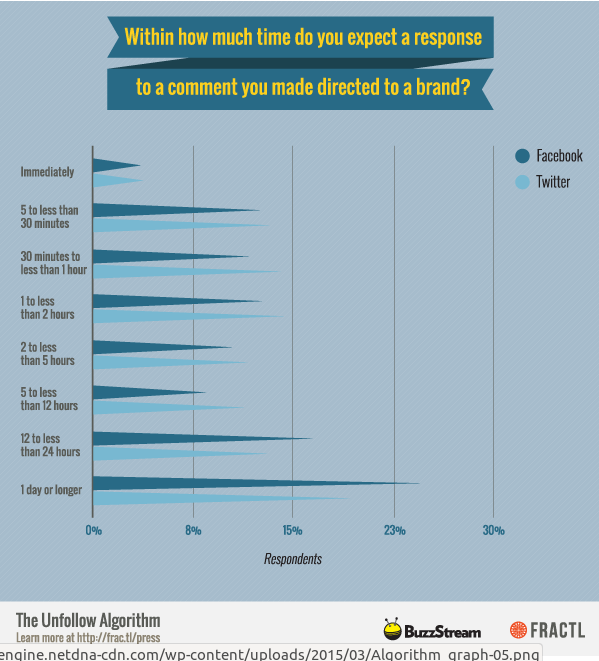
Some surveys show that people are even more demanding than the chart above might suggest.
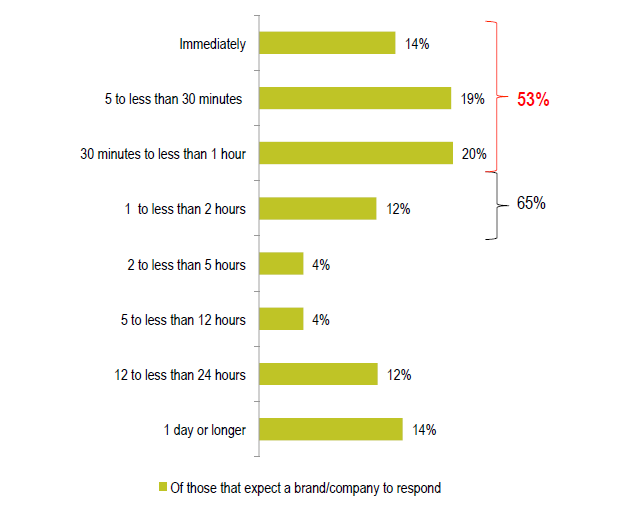
The best way that you can handle the situation of people leaving comments is by being prompt.
The second chart relates more specifically to complaints. If you notice a complaint on your profile deal, with it fast, before things get out of control.
This will let people know that it is worth engaging with your social media profile and that they’ll get a response and some kind of reciprocity when engaging.
Over time, this will generate more goodwill between you and your social media fans/followers.
Should you hire someone to help you?
If all of this seems like it’s too much for you to handle, you could consider the option of hiring a social media manager.
When you have someone like that on your side, you’ll be able to ensure that all of these things are being taken care of.
However, it might be a good idea to first do some of the social media activities yourself. Then, you’ll know what works and what doesn’t.
You’ll also be better able to evaluate the work of a social media manager if you know how it all works.
Conclusion
Here’s the truth — social media is not going to go away any time soon, no matter what you think of it.
However, if you’re a business owner, why would you want it to go away?
If used properly, social media has the power to dramatically change the way you acquire customers.
But, you can’t be foolhardy in your approach. And, you definitely can’t be pushy.
Social media can hurt you as much as it can help you.
In order to get the best results, you need to understand the nuances of social media.
That means that you need to understand the importance of post frequency and post length herunterladen.
You also need to know what kind of posts work best for each type of social media platform.
At the end of the day, you could argue that it all comes down to knowing who is going to be viewing your social media posts, and what ‘mode’ they’re going to be in.
When you put yourself in the shoes of your target market, you’ll be able to craft winning social media campaigns, even when a new platform comes along.
Conquering social media is not as hard as it sounds — you just need to understand how to play the game.
What have you learned when it comes to improving engagement on social media?



